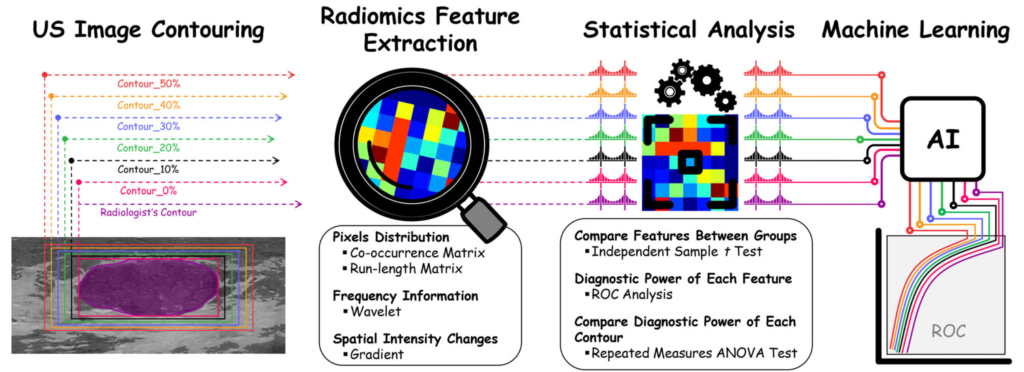Abstract
Objectives
The tumor microenvironment (TME) consists of cellular and noncellular components which enable the tumor to interact with its surroundings and plays an important role in the tumor progression and how the immune system reacts to the malignancy. In the present study, we investigate the diagnostic potential of the TME in differentiating benign and malignant lesions using image quantification and machine learning.
Methods
A total of 229 breast lesions and 220 cervical lymph nodes were included in the study. A group of expert radiologists first performed medical imaging and segmented the lesions, after which a rectangular mask was drawn, encompassing all of the contouring. The mask was extended in each axis up to 50%, and 29 radiomics features were extracted from each mask. Radiomics features that showed a significant difference in each contour were used to develop a support vector machine (SVM) classifier for benign and malignant lesions in breast and lymph node images separately.
Results
Single radiomics features extracted from extended contours outperformed radiologists’ contours in both breast and lymph node lesions. Furthermore, when fed into the SVM model, the extended models also outperformed the radiologist’s contour, achieving an area under the receiver operating characteristic curve of 0.887 and 0.970 in differentiating breast and lymph node lesions, respectively.
Conclusions
Our results provide convincing evidence regarding the importance of the tumor periphery and TME in medical imaging diagnosis. We propose that the immediate tumor periphery should be considered for differentiating benign and malignant lesions in image quantification studies.


